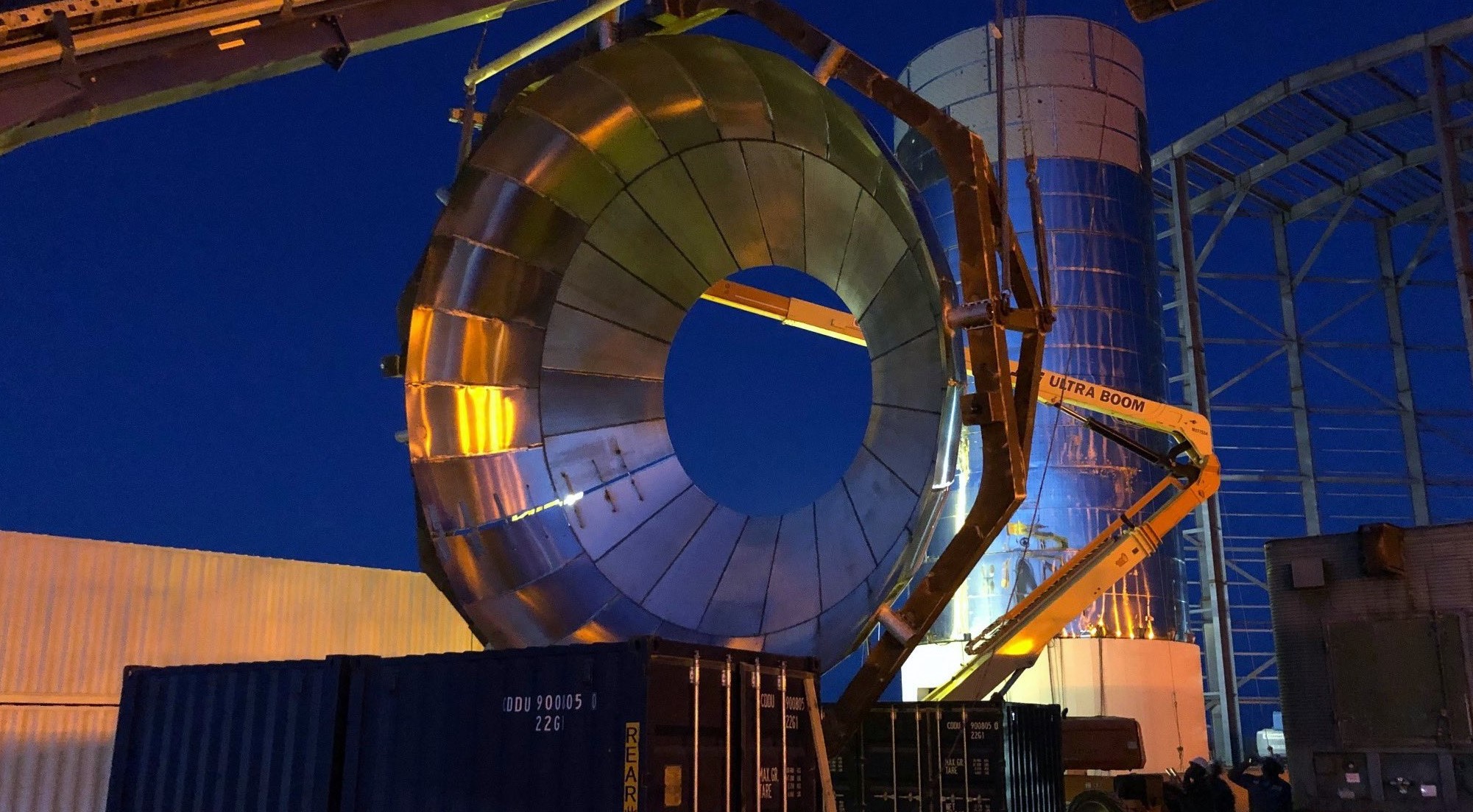
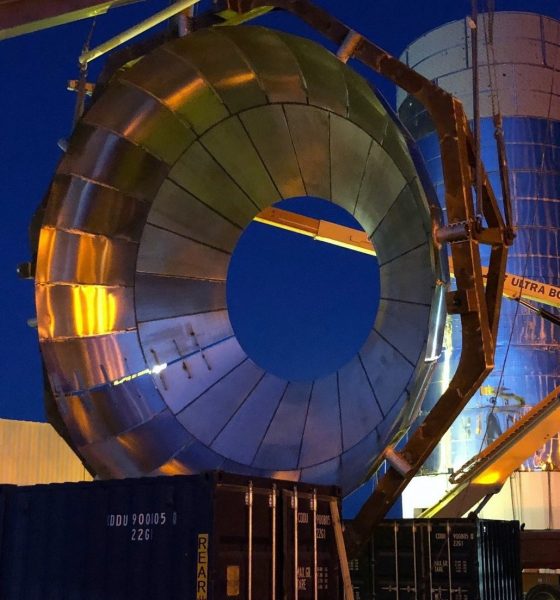
News
SpaceX preps Texas Starship’s second tank dome for installation in latest milestone
During an August 4th visit to SpaceX’s Boca Chica Starship build site, CEO Elon Musk captured and shared photos showing technicians carefully flipping the second of three propellant tank domes destined for installation inside the company’s South Texas orbital Starship prototype.
This is the latest visible step towards the completion of one of SpaceX’s two “Mk 1” Starships, said by Elon Musk to be the first orbit-capable prototypes. Per recent tweets, either or both of the prototypes – being built concurrently at separate sites in Florida and Texas – could be ready for their first flight tests as early as September or October 2019.
Set to be powered by up to three sea-level (SL) Raptors and three vacuum-optimized Raptors (RVacs), Musk has stated that SpaceX’s first two orbital Starship prototypes will likely begin flight testing with just the three SL engines installed. Recently, the SpaceX CEO did, however, indicate that development of Raptor’s vacuum variant – postponed as of a September 2018 update – had been reprioritized and said that it could actually be ready sooner than later.
Raptor Vacuum will have a significantly larger nozzle compared to the sea level engine it will be based on. According to Musk, RaptorVac will have a nozzle diameter of roughly 2.8m (9.2 ft), while the SL Raptor features a ~1.3m (4.2 ft)-diameter nozzle. With a larger diameter nozzle, a chemical rocket engine can technically generate more thrust and is significantly more efficient due to an increased expansion ratio, meaning the difference in the diameter of the nozzle exit and combustion chamber throat.
In the very simplest sense, this efficiency and thrust increase comes from the fact that a longer nozzle allows the exiting gas (reaction mass) to reach a higher velocity, thus conveying more momentum onto the rocket it is propelling.
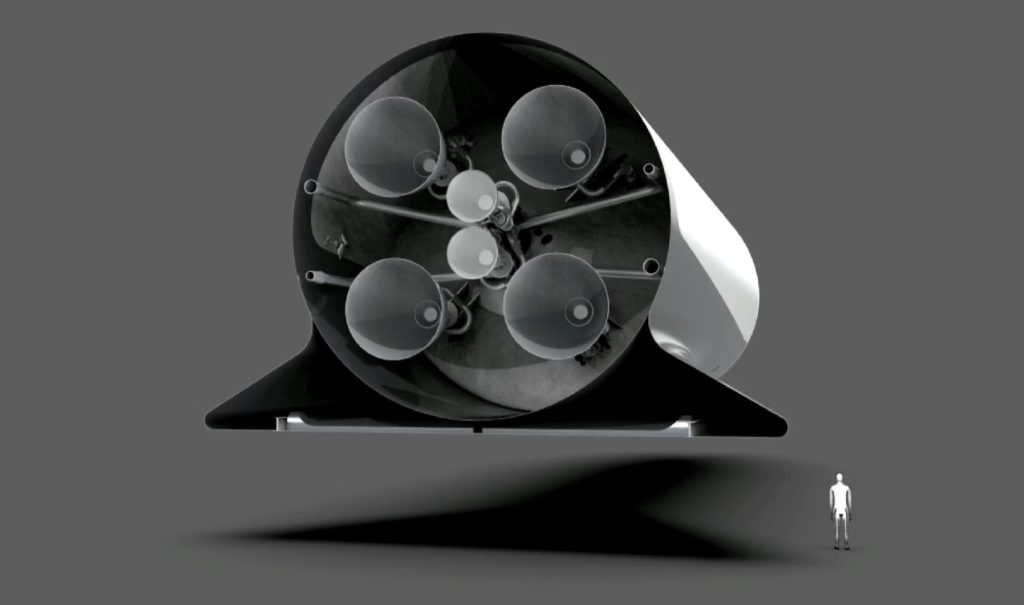
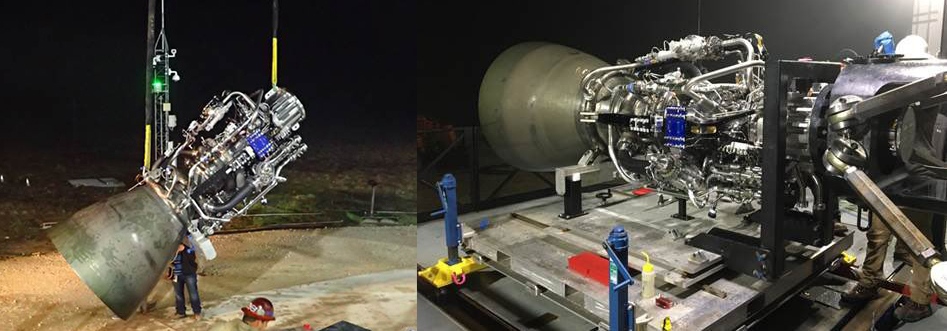
Starship’s Raptor engines, of course, use liquid methane as fuel and liquid oxygen as their oxidizer. According to SpaceX, fully fueling a combined Super Heavy and Starship stack will require an incredible ~5000 tons (11 million pounds) of propellant – ~1500 tons for Starship and ~3500 tons for Super Heavy.
To contain such a huge amount of fuel and oxidizer, Starship (and Super Heavy) must effectively be turned into extremely mass-efficient pressure vessels, capable of supporting something like 20 kilograms of propellant with every kilogram of rocket structure.
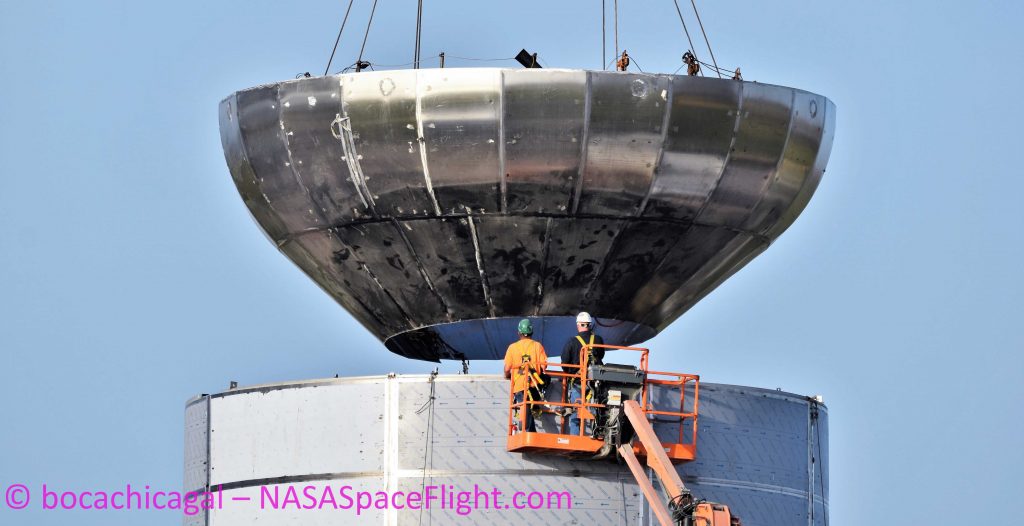
SpaceX’s installation of bulkheads in the Texas Starship prototype are thus an inherent indication that the rocket is being readied to play the role of a massive, ultra-strong pressure vessel. While sitting vertically, a fueled Starship’s tank domes will be subjected to immense pressures and forces from the sheer weight of the liquid oxygen and methane held above them.
Additionally, the rearmost dome will likely be partially or fully integrated into Starship’s thrust structure, meaning that it will simultaneously be subjected to the thrust of 3-6 Raptors (as much as 600-1200 tons of thrust) and the gravity of 300 metric tons of methane. It’s unclear if SpaceX is planning to reinforce Starship and Super Heavy tank bulkheads with structural add-ons, but it’s safe to assume that some level of reinforcement will be required.
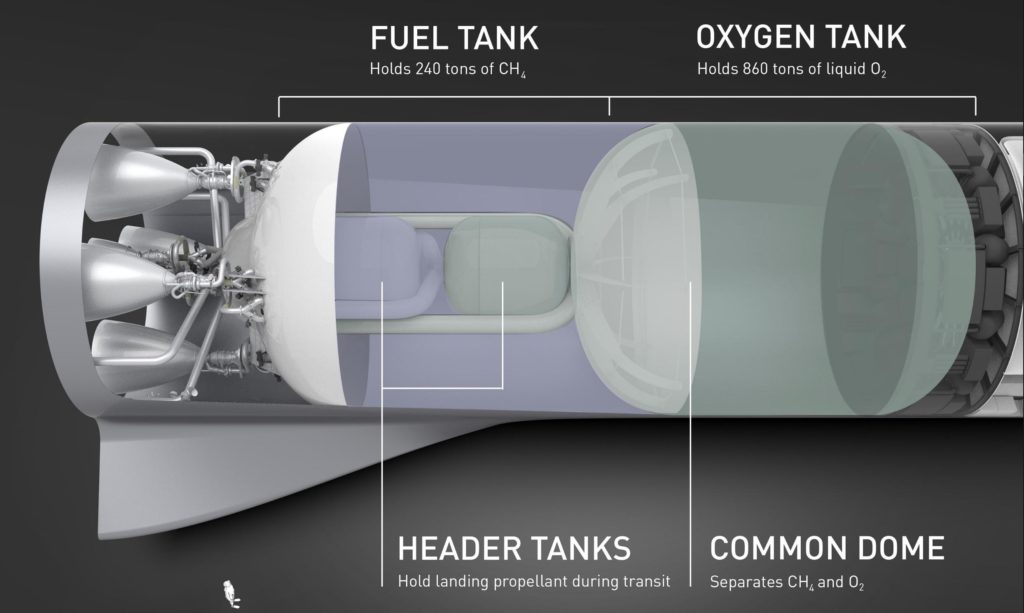
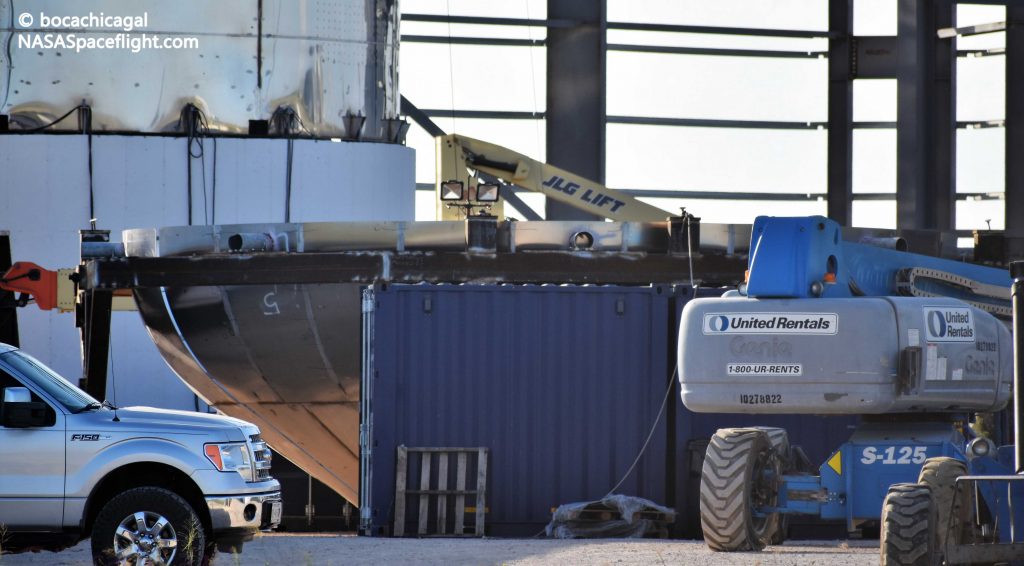
SpaceX CEO Elon Musk’s planned August 24th presentation on Starship and Super Heavy will likely (hopefully) provide some new details on the structure and general design of the company’s advanced, next-generation rocket.
Check out Teslarati’s Marketplace! We offer Tesla accessories, including for the Tesla Cybertruck and Tesla Model 3.

News
Tesla Model Y Standard Long Range RWD launches in Europe
The update was announced by Tesla Europe & Middle East in a post on its official social media account on X.

Tesla has expanded the Model Y lineup in Europe with the introduction of the Standard Long Range RWD variant, which offers an impressive 657 km of WLTP range.
The update was announced by Tesla Europe & Middle East in a post on its official social media account on X.
Model Y Standard Long Range RWD Details
Tesla Europe & Middle East highlighted some of the Model Y Standard Long Range RWD’s most notable specs, from its 657 km of WLTP range to its 2,118 liters of cargo volume. More importantly, Tesla also noted that the newly released variant only consumes 12.7 kWh per 100 km, making it the most efficient Model Y to date.
The Model Y Standard provides a lower entry point for consumers who wish to enter the Tesla ecosystem at the lowest possible price. While the Model 3 Standard is still more affordable, some consumers might prefer the Model Y Standard due to its larger size and crossover form factor. The fact that the Model Y Standard is equipped with Tesla’s AI4 computer also makes it ready for FSD’s eventual rollout to the region.
Top Gear’s Model Y Standard review
Top Gear‘s recent review of the Tesla Model Y Standard highlighted some of the vehicle’s most notable features, such as its impressive real-world range, stellar infotainment system, and spacious interior. As per the publication, the Model Y Standard still retains a lot of what makes Tesla’s vehicles well-rounded, even if it’s been equipped with a simplified interior.
Top Gear compared the Model Y Standard to its rivals in the same segment. “The introduction of the Standard trim brings the Model Y in line with the entry price of most of its closest competition. In fact, it’s actually cheaper than a Peugeot e-3008 and costs £5k less than an entry-level Audi Q4 e-tron. It also makes the Ford Mustang Mach-E look a little short with its higher entry price and worse range,” the publication wrote.
Elon Musk
Elon Musk’s xAI bets $20B on Mississippi with 2GW AI data center project
The project is expected to create hundreds of permanent jobs, dramatically expand xAI’s computing capacity, and further cement the Mid-South as a growing hub for AI infrastructure.
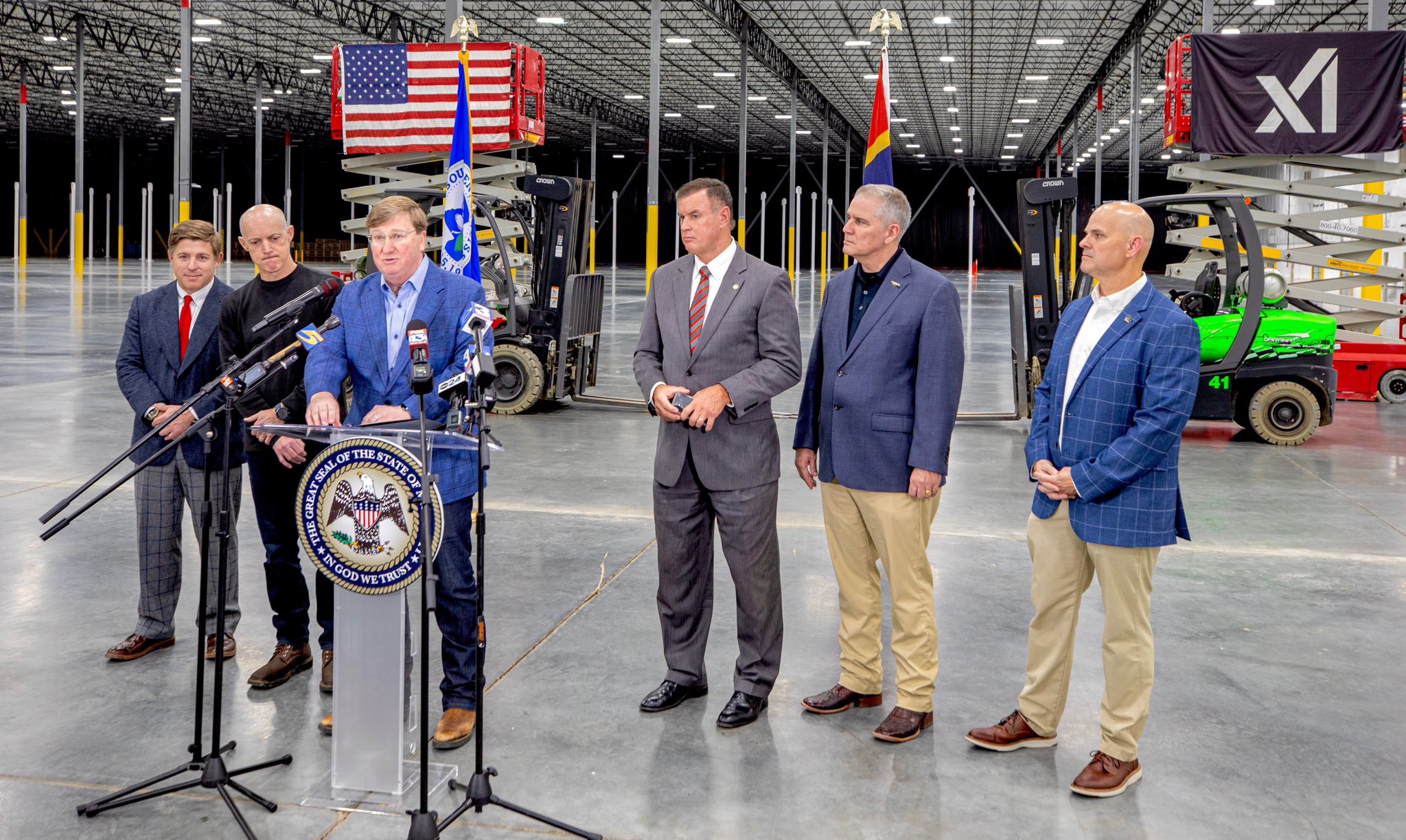
Elon Musk’s xAI plans to pour more than $20 billion into a massive new data center campus in Southaven, Mississippi, marking the largest single economic development project in the state’s history.
The project is expected to create hundreds of permanent jobs, dramatically expand xAI’s computing capacity, and further cement the Mid-South as a growing hub for AI infrastructure.
xAI goes MACROHARDRR in Mississippi
xAI has acquired and is retrofitting an existing facility in Southaven to serve as a new data center, which will be known as “MACROHARDRR.” The site sits near a recently acquired power plant and close to one of xAI’s existing data centers in Tennessee, creating a regional cluster designed to support large-scale AI training and inference.
Once completed, the Southaven facility is expected to push the company’s total computing capacity to nearly 2 GW, placing it among the most powerful AI compute installations globally. The data center is scheduled to begin operations in February 2026.
Gov. Tate Reeves shared his optimism about the project in a press release. “This record-shattering $20 billion investment is an amazing start to what is sure to be another incredible year for economic development in Mississippi. Today, Elon Musk is bringing xAI to DeSoto County, a project that will transform the region and bring amazing opportunities to its residents for generations. This is the largest economic development project in Mississippi’s history,” he said.
xAI’s broader AI ambitions
To secure the investment, the Mississippi Development Authority approved xAI for its Data Center Incentive program, which provides sales and use tax exemptions on eligible computing hardware and software. The City of Southaven and DeSoto County are also supporting the project through fee-in-lieu agreements aimed at accelerating development timelines and reducing upfront costs.
Founded in 2023 by Elon Musk, xAI develops advanced artificial intelligence systems focused on large-scale reasoning and generative applications. Its flagship product, Grok, is integrated with the social media platform X, alongside a growing suite of APIs for image generation, voice, and autonomous agents, including offerings tailored for government use.
Elon Musk highlighted xAi’s growth and momentum in a comment about the matter. “xAI is scaling at an immeasurable pace — we are building our third massive data center in the greater Memphis area. MACROHARDRR pushes our Colossus training compute to ~2GW – by far the most powerful AI system on Earth. This is insane execution speed by xAI and the state of Mississippi. We are grateful to Governor Reeves for his support of building xAI at warp speed,” Musk said.
Elon Musk
Tesla AI Head says future FSD feature has already partially shipped

Tesla’s Head of AI, Ashok Elluswamy, says that something that was expected with version 14.3 of the company’s Full Self-Driving platform has already partially shipped with the current build of version 14.2.
Tesla and CEO Elon Musk have teased on several occasions that reasoning will be a big piece of future Full Self-Driving builds, helping bring forth the “sentient” narrative that the company has pushed for these more advanced FSD versions.
Back in October on the Q3 Earnings Call, Musk said:
“With reasoning, it’s literally going to think about which parking spot to pick. It’ll drop you off at the entrance of the store, then go find a parking spot. It’s going to spot empty spots much better than a human. It’s going to use reasoning to solve things.”
Musk said in the same month:
“By v14.3, your car will feel like it is sentient.”
Amazingly, Tesla Full Self-Driving v14.2.2.2, which is the most recent iteration released, is very close to this sentient feeling. However, there are more things that need to be improved, and logic appears to be in the future plans to help with decision-making in general, alongside other refinements and features.
On Thursday evening, Elluswamy revealed that some of the reasoning features have already been rolled out, confirming that it has been added to navigation route changes during construction, as well as with parking options.
He added that “more and more reasoning will ship in Q1.”
🚨 Tesla’s Ashok Elluswamy reveals Nav decisions when encountering construction and parking options contain “some elements of reasoning”
More uses of reasoning will be shipped later this quarter, a big tidbit of info as we wait v14.3 https://t.co/jty8llgsKM
— TESLARATI (@Teslarati) January 9, 2026
Interestingly, parking improvements were hinted at being added in the initial rollout of v14.2 several months ago. These had not rolled out to vehicles quite yet, as they were listed under the future improvements portion of the release notes, but it appears things have already started to make their way to cars in a limited fashion.
Tesla Full Self-Driving v14.2 – Full Review, the Good and the Bad
As reasoning is more involved in more of the Full Self-Driving suite, it is likely we will see cars make better decisions in terms of routing and navigation, which is a big complaint of many owners (including me).
Additionally, the operation as a whole should be smoother and more comfortable to owners, which is hard to believe considering how good it is already. Nevertheless, there are absolutely improvements that need to be made before Tesla can introduce completely unsupervised FSD.








